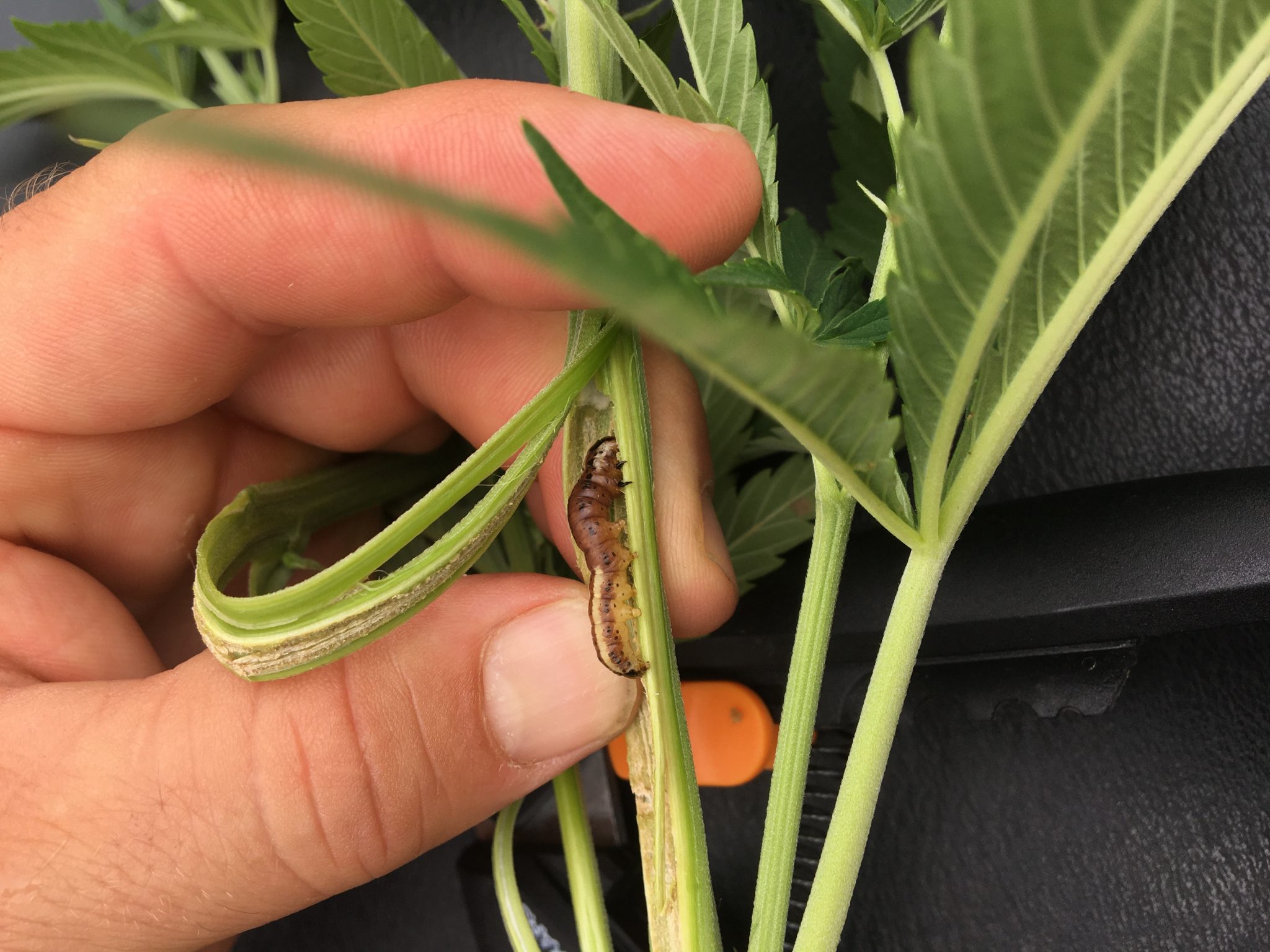
For many hemp growers, things have been calm in the field.

For many hemp growers, things have been calm in the field.
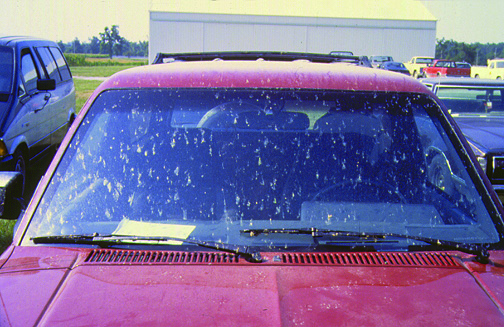
For the last several years, we have heard from pest managers about European corn borer (ECB) infestations and damage catching the producer, or themselves, off guard when growing non-traited corn.
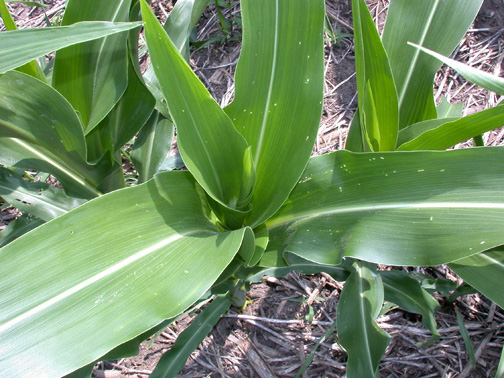
The female moths are attracted to many hosts, tall, early lush corn being one.
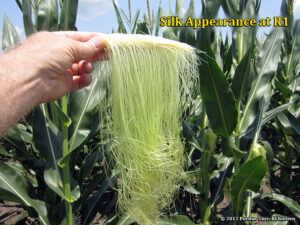
The grain fill period begins with successful pollination and initiation of kernel development, and ends approximately 60 days later when the kernels are physiologically mature. During grain fill, the developing kernels are the primary sink for concurrent photosynthate produced by the corn plant. What this means is that the photosynthate demands of the developing kernels will take precedence over that of much of the rest of the plant

Droopy ears are cute on certain breeds of dogs, but droopy ears on corn plants prior to physiological maturity are a signal that grain fill has slowed or halted. Ears of corn normally remain erect until some time after physiological maturity (black layer development) has occurred, after which the ear shanks eventually collapse and the ears decline or “droop” down. The normal declination of the ears AFTER maturity is desirable from the perspective of shedding rainfall prior to harvest and avoiding the re-wetting of the kernels. PREMATURE ear declination, however, results in premature black layer formation, lightweight grain, and ultimately lower grain yield per acre.

The grain fill period begins with successful pollination and initiation of kernel development, and ends approximately 60 days later when the kernels are physiologically mature. During grain fill, the developing kernels are the primary sink for concurrent photosynthate produced by the corn plant. What this means is that the photosynthate demands of the developing kernels will take precedence over that of much of the rest of the plant.
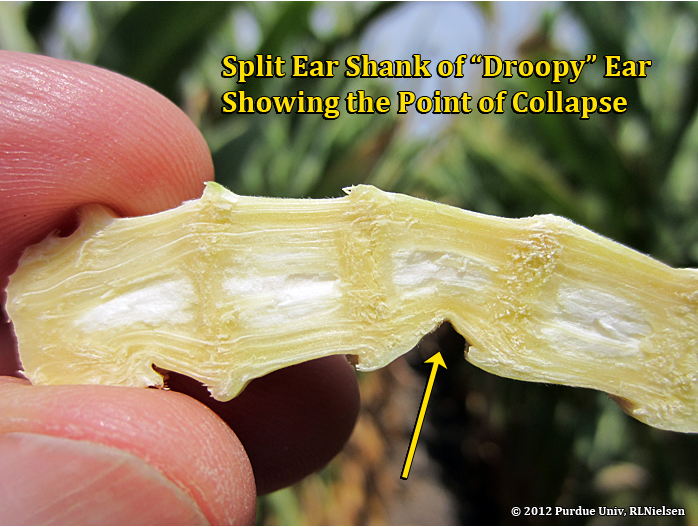
Droopy ears are cute on certain breeds of dogs, but droopy ears on corn plants prior to physiological maturity are a signal that grain fill has slowed or halted.
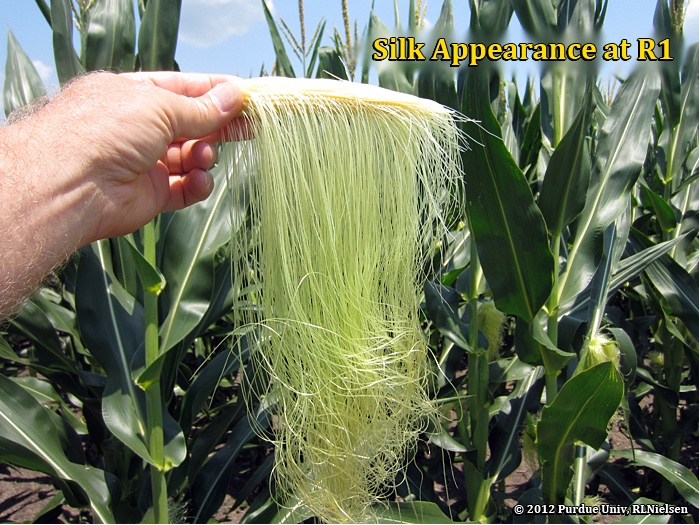
The grain fill period begins with successful pollination and initiation of kernel development, and ends approximately 60 days later when the kernels are physiologically mature. During grain fill, the developing kernels are the primary sink for concurrent photosynthate produced by the corn plant.

Yield potential in corn is influenced at several stages of growth and development.
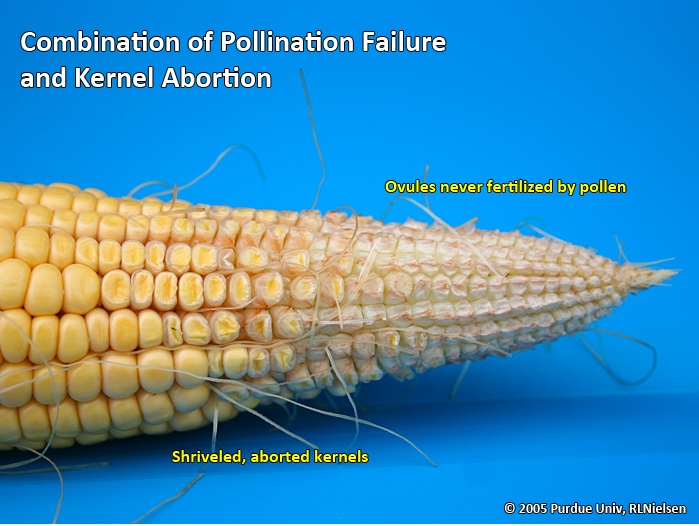
Yield potential in corn is influenced at several stages of growth and development
© 2024 Purdue University | An equal access/equal opportunity university | Copyright Complaints | Maintained by Pest&Crop newsletter
If you have trouble accessing this page because of a disability, please contact Pest&Crop newsletter at luck@purdue.edu.